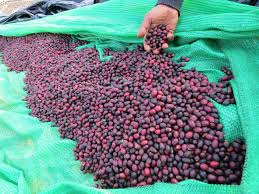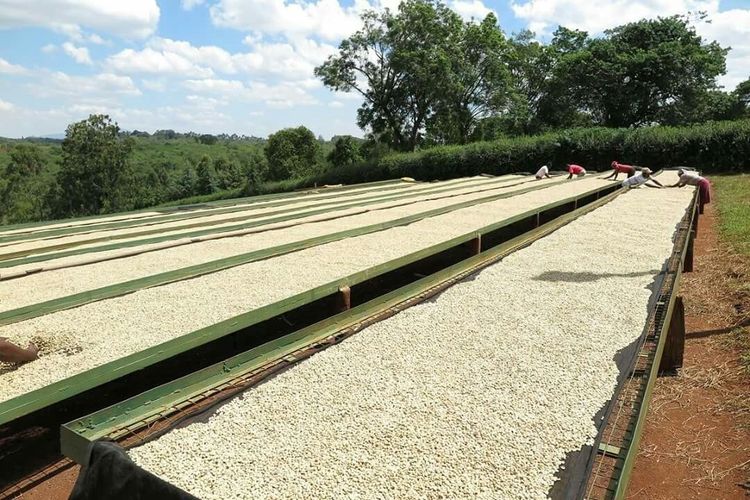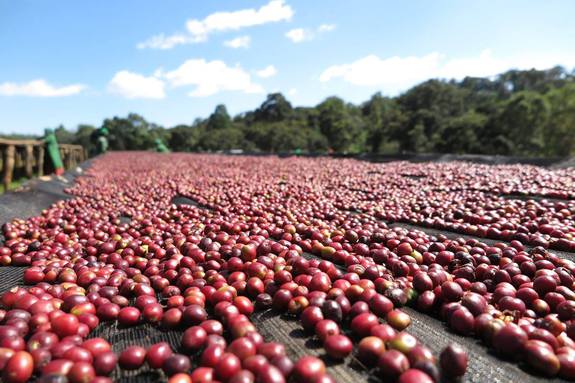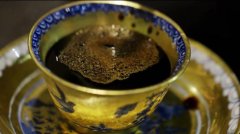Panamanian Angel Kiss Miracle Coffee Bean introduction Honey treatment Evaluation of Rosa Flavor
Panamanian angel kiss miracle geisha honey treatment

Angel Kiss BESO DE ANGEL is planted in Chiriqui, Panama. The height of Haiba is 1500 ~ 1800 meters. Pure Panamanian Geisha species, the peeled berries are naturally dried in an African bed with plenty of sunshine and full of Atlantic and Pacific whirling breezes. Angel kiss BESO DE ANGEL tastes like kissing a gentle breeze, full of unrestrained aroma, typical Panamanian Geisha full of warm orange aroma, because honey treatment makes the flavor super sweet and ripe into the sweetness of peach, the whole is like a delicate fruit flower tea tail rhyme is a long-lasting perfume and tea flavor

Product name: Angel Kiss-Miracle Geisha
Region: Panama
Hai Postscript: 1500-1800m
Species: pure Panamanian geisha Geisha species
Treatment method: Honey honey treatment

Strong floral aroma, peach, sweet grape, strawberry, herbal tea, soft tail, perfume, Earl tea, fruity aroma
Official coffee production in Panama, which began in the early 20th century, is grown in the westernmost valleys and mountains of the country, dominated by mild-tasting Arabica beans, producing 82% of Arabica and 18% of Robusta varieties, respectively. The Chiriqui Plateau, grown at 2300-3500 feet (700-1070 m) above sea level, is considered to be the highest quality Arabica coffee in Panama, with the most famous boutique coffee in Boquete and Volcan producing areas because of its high rating in the international market and price records.
It is said that the coffee grown in this area has a rich and charming taste, rich fruit tone and mild acidity. The reason is that almost all the coffee trees in the area grow under shade trees and use the best sunbathing on the scaffolding as a traditional way of handling raw beans. In addition, the farms in this area are processed by hand, and machines are used only in the wet grinding process. Therefore, in seed preservation, farming techniques and peeling methods, the tradition of generation after generation is preserved, and modern advanced technology is combined.

According to FAO statistics in 2013, the production of Panamanian coffee was 10100 tons, accounting for about 0.1 per cent of global production, with a planting area of 22400 hectares. From 1966 to 2005, coffee production statistics showed that production increased from less than 402 tons in 1961 to 1422 tons in 1985, but fell to 510 tons in 2014.
Coffee trees and crops in Panama are eventually affected by natural pests in other coffee-producing countries. The pests that have seriously affected the cultivation of coffee farms on 20097 hectares in recent years are iron rust, Ojo de Gallo and beetles.
Although Panama is a small coffee producer, its coffee is characterized by its ideal production environment, such as high altitude, volcanic soil, balance of water and sunlight caused by tropical plateau climate, many microclimates, many unique coffee flavor and taste, because coffee trees grow in high altitude areas (starting from 1.400 mts), low temperature and slow growth rate. Brewing a complete taste and aroma development.
Important Notice :
前街咖啡 FrontStreet Coffee has moved to new addredd:
FrontStreet Coffee Address: 315,Donghua East Road,GuangZhou
Tel:020 38364473
- Prev

What is the flavor of old manning coffee? barreled aged coffee
Professional barista exchanges please follow the coffee workshop (Wechat official account cafe_style) in Osaka, Japan, there is a coffee shop, Mingshi Coffee, a cup of 22-year-old wooden bucket coffee, $914! Barreled aged coffee oak barrels play an indispensable role in the enhancement of wine flavor. It is for this reason that this aged coffee is designed to extract.
- Next

Panamanian Cupid boutique coffee beans 30% geisha / Rosa content premium boutique coffee beans
Panamanian Boquette Cupid 30% Geisha ~ 2017 latest batch production area: Poquette Baru volcanic area producer: local small farmers varieties: Rosa, Kaduai, Kaddura treatment: washing altitude: 1600-1650m flavor: floral aroma, white grape, caramel, honey, black tea Panamanian coffee originated in 1780, from European immigrants introduced the first batch of Typica tree species. BA
Related
- Detailed explanation of Jadeite planting Land in Panamanian Jadeite Manor introduction to the grading system of Jadeite competitive bidding, Red bid, Green bid and Rose Summer
- Story of Coffee planting in Brenka region of Costa Rica Stonehenge Manor anaerobic heavy honey treatment of flavor mouth
- What's on the barrel of Blue Mountain Coffee beans?
- Can American coffee also pull flowers? How to use hot American style to pull out a good-looking pattern?
- Can you make a cold extract with coffee beans? What is the right proportion for cold-extracted coffee formula?
- Indonesian PWN Gold Mandrine Coffee Origin Features Flavor How to Chong? Mandolin coffee is American.
- A brief introduction to the flavor characteristics of Brazilian yellow bourbon coffee beans
- What is the effect of different water quality on the flavor of cold-extracted coffee? What kind of water is best for brewing coffee?
- Why do you think of Rose Summer whenever you mention Panamanian coffee?
- Introduction to the characteristics of authentic blue mountain coffee bean producing areas? What is the CIB Coffee Authority in Jamaica?

